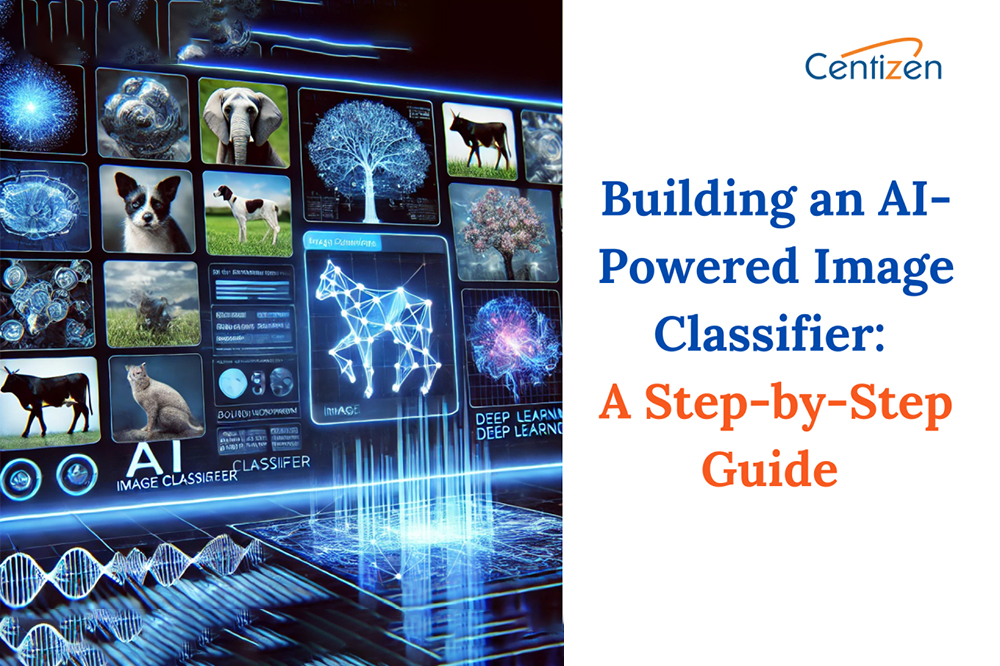Building an AI-Powered Image Classifier: A Step-by-Step Guide

In an era where artificial intelligence (AI) is reshaping industries, image classification has become a fundamental capability for applications across healthcare, e-commerce, security, and more. Whether you’re identifying defective products in manufacturing or enabling visual search in an e-commerce app, building an image classifier can provide immense value.
So, how do you build an efficient image classifier app? Let’s break it down.
Step 1: Define the problem statement
Before diving into coding, clearly define the goal of your image classifier. Are you categorizing images of animals, detecting objects in security footage, or identifying handwritten digits? A well-defined problem ensures a smooth development process.
Step 2: Gather and prepare the dataset
A robust dataset is the foundation of an accurate classifier. Options include:
- Public datasets like ImageNet, CIFAR-10, or MNIST.
- Custom datasets that require manual data collection and annotation. Ensure your dataset is balanced across categories to prevent biased predictions.
Data preprocessing
- Resizing images to a uniform dimension (e.g., 224×224 pixels).
- Normalization to scale pixel values between 0 and 1.
- Data augmentation (flipping, rotating, cropping) to enhance model generalization.
Step 3: Choose the right model
You have two main options:
- Pre-trained models (Transfer learning): Models like ResNet, VGG, or EfficientNet are trained on massive datasets and can be fine-tuned for your use case.
- Custom models: If your dataset is unique, you may need to build a convolutional neural network (CNN) from scratch using TensorFlow, PyTorch, or Keras.
Step 4: Train and optimize the model
- Split data: Divide the dataset into training, validation, and test sets.
- Hyperparameter tuning: Adjust learning rates, batch sizes, and optimizer functions to improve performance.
- Early stopping: Prevent overfitting by stopping training when validation loss starts increasing.
Step 5: Deploy the model
Once trained, deploy your model using:
- On-device deployment: TensorFlow Lite or Core ML for mobile applications.
- Cloud deployment: AWS SageMaker, Google Vertex AI, or Azure ML for scalable inference.
- Edge AI: Run inference on embedded devices using NVIDIA Jetson or OpenVINO.
Step 6: Monitor and improve
Continuous monitoring is essential to maintain accuracy over time. Collect real-world data, retrain the model periodically, and implement drift detection techniques.
Final thoughts
Building an image classifier is not just about coding—it’s about solving real-world problems with AI. With the right dataset, model, and deployment strategy, you can create impactful applications that enhance user experiences and streamline business processes.
Our services:
- Staffing: Contract, contract-to-hire, direct hire, remote global hiring, SOW projects, and managed services.
- Remote hiring: Hire full-time IT professionals from our India-based talent network.
- Custom software development: Web/Mobile Development, UI/UX Design, QA & Automation, API Integration, DevOps, and Product Development.
Our products:
- ZenBasket: A customizable ecommerce platform.
- Zenyo payroll: Automated payroll processing for India.
- Zenyo workforce: Streamlined HR and productivity tools.
Centizen
A Leading Staffing, Custom Software and SaaS Product Development company founded in 2003. We offer a wide range of scalable, innovative IT Staffing and Software Development Solutions.
Call Us
India: +91 63807-80156
USA & Canada: +1 (971) 420-1700
Send Us Email
contact@centizen.com
Centizen
A Leading Staffing, Custom Software and SaaS Product Development company founded in 2003. We offer a wide range of scalable, innovative IT Staffing and Software Development Solutions.
Call Us
India: +91 63807-80156
USA & Canada: +1 (971) 420-1700
Send Us Email
contact@centizen.com

